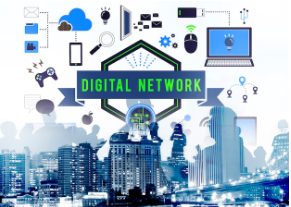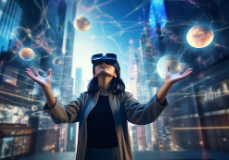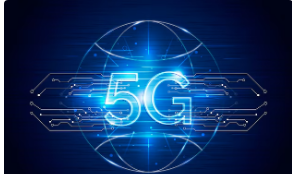The transition to renewable energy is essential for addressing climate change, reducing carbon emissions, and ensuring a sustainable future. Renewable energy technologies harness natural resources, such as sunlight, wind, water, and geothermal heat, to produce clean and sustainable power. This article explores the primary renewable energy technologies, their benefits, applications, and the transformative impact they have on the global energy landscape.
1. Understanding Renewable Energy Technologies
Renewable energy technologies convert natural resources into usable energy without depleting them. Unlike fossil fuels, which release greenhouse gases and pollutants, renewable energy sources are clean, abundant, and sustainable. The major types of renewable energy technologies include solar power, wind energy, hydropower, geothermal energy, and biomass energy.
2. Key Renewable Energy Technologies
Solar Power:
Photovoltaic (PV) Systems: PV systems convert sunlight directly into electricity using solar cells made of semiconductor materials. They are widely used in residential, commercial, and utility-scale applications.
Concentrated Solar Power (CSP): CSP systems use mirrors or lenses to concentrate sunlight onto a small area, generating heat that drives a steam turbine to produce electricity. CSP is typically used for large-scale power generation.
Wind Energy:
Onshore Wind Turbines: Onshore wind turbines are installed on land and capture wind energy to generate electricity. They are one of the most cost-effective renewable energy sources and are widely used worldwide.
Offshore Wind Turbines: Offshore wind turbines are located in bodies of water, where wind speeds are typically higher and more consistent. They have significant potential for large-scale power generation.
Hydropower:
Run-of-River Hydropower: Run-of-river systems generate electricity by channeling a portion of a river’s flow through a turbine. They have minimal environmental impact and are suitable for small-scale power generation.
Reservoir Hydropower: Reservoir systems use dams to store water in a reservoir, which is then released to drive turbines and generate electricity. They provide a reliable and controllable source of power and can also offer flood control and irrigation benefits.
Geothermal Energy:
Geothermal Power Plants: Geothermal power plants tap into the Earth’s internal heat by drilling wells to access hot water and steam, which are used to drive turbines and generate electricity. Geothermal energy is a reliable and consistent power source.
Geothermal Heat Pumps: Geothermal heat pumps use the stable temperature of the ground to heat and cool buildings. They are highly efficient and can significantly reduce energy consumption for heating and cooling.
Biomass Energy:
Biomass Power Plants: Biomass power plants burn organic materials, such as wood, agricultural residues, and waste, to generate electricity and heat. Biomass is a versatile and renewable energy source that can help reduce waste.
Biofuels: Biofuels, such as ethanol and biodiesel, are produced from organic materials and can be used as alternatives to gasoline and diesel. They contribute to reducing greenhouse gas emissions from transportation.
3. Benefits of Renewable Energy Technologies
Environmental Sustainability: Renewable energy technologies produce little to no greenhouse gas emissions, reducing air pollution and mitigating climate change. They also help conserve natural resources and protect ecosystems.
Energy Security: By diversifying energy sources and reducing dependence on fossil fuels, renewable energy enhances energy security and resilience. It reduces vulnerability to supply disruptions and price fluctuations in the global energy market.
Economic Growth: The renewable energy sector creates jobs and stimulates economic growth through the development, installation, and maintenance of renewable energy infrastructure. It also attracts investment and fosters innovation.
Health Benefits: Reducing air pollution from fossil fuel combustion improves public health by decreasing respiratory and cardiovascular diseases. Renewable energy contributes to cleaner air and healthier communities.
Scalability and Flexibility: Renewable energy technologies can be deployed at various scales, from small residential systems to large utility-scale projects. They can be tailored to meet local energy needs and integrated into existing energy systems.
4. Applications of Renewable Energy Technologies
Residential: Homeowners can install rooftop solar panels, small wind turbines, and geothermal heat pumps to generate electricity, heat water, and provide heating and cooling. These systems can reduce energy bills and increase energy independence.
Commercial and Industrial: Businesses can use renewable energy technologies to power their operations, reduce carbon footprints, and enhance sustainability. Large-scale installations, such as solar farms and wind parks, can provide significant energy for industrial processes.
Utility-Scale: Utilities can invest in large-scale renewable energy projects, such as solar farms, wind parks, and hydropower plants, to supply clean electricity to the grid. These projects contribute to meeting renewable energy targets and reducing carbon emissions.
Off-Grid and Remote Areas: Renewable energy technologies offer solutions for off-grid and remote areas where traditional energy infrastructure is not feasible. Solar panels, wind turbines, and micro-hydro systems can provide reliable power for remote communities.
Transportation: Biofuels and electric vehicles powered by renewable energy can reduce the environmental impact of transportation. Renewable energy can also be used to produce green hydrogen, a clean fuel for vehicles and industrial applications.
5. Challenges and Considerations
Despite their numerous benefits, renewable energy technologies face several challenges:
Intermittency: Some renewable energy sources, such as solar and wind, are intermittent and depend on weather conditions. Energy storage solutions, such as batteries and pumped hydro, are essential to ensure a stable and reliable energy supply.
Initial Costs: The initial investment for renewable energy installations can be high, although costs are decreasing with technological advancements and economies of scale. Incentives, subsidies, and financing options can help offset these costs.
Grid Integration: Integrating renewable energy into existing power grids requires upgrading infrastructure and implementing smart grid technologies. Grid stability and reliability must be maintained as the share of variable renewable energy increases.
Land Use and Environmental Impact: Large-scale renewable energy projects can require significant land and impact local ecosystems. Careful planning and environmental assessments are necessary to minimize these impacts.
6. Future Outlook
The future of renewable energy is bright, with continued advancements in technology, policy support, and public awareness driving its growth. Innovations in energy storage, grid management, and hybrid systems will enhance the efficiency and reliability of renewable energy. Global commitments to reducing carbon emissions and transitioning to sustainable energy sources will further accelerate the adoption of renewable energy technologies.
Conclusion
Renewable energy technologies are essential for shaping a sustainable future. By harnessing natural resources such as sunlight, wind, water, and geothermal heat, these technologies provide clean, abundant, and sustainable power. The benefits of renewable energy include environmental sustainability, energy security, economic growth, health improvements, and scalability. Despite challenges related to intermittency, initial costs, grid integration, and environmental impact, the continued advancement and adoption of renewable energy technologies hold the promise of a cleaner, greener, and more sustainable world. As we move towards a renewable energy future, it is crucial to support and invest in these technologies to ensure a sustainable and prosperous future for generations to come.









